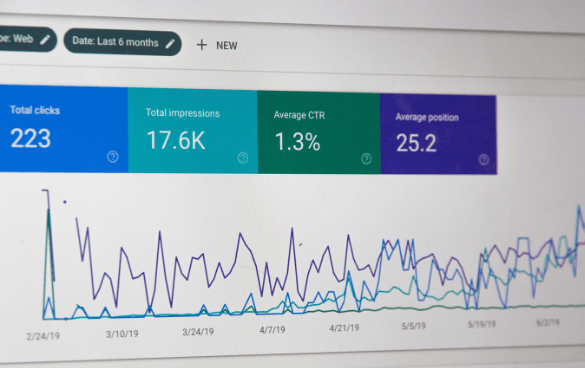A Full Guide to Remarketing In Google Analytics
A Full Guide to Remarketing In Google Analytics
Blog Article
Optimize Your ROI With Remarketing in Google Analytics
In the realm of electronic marketing, the utilization of remarketing approaches within Google Analytics has shown to be a powerful tool for enhancing return on financial investment. By using the power of customer information and customizing advertisements to specific target market segments, businesses can significantly enhance their conversion rates. Nonetheless, the genuine essential lies in the art of accuracy - comprehending user actions, crafting compelling ads, and continuously refining approaches to drive ideal results. The trip to making best use of ROI with remarketing is a nuanced path led with insights and chances that can reshape the trajectory of your advertising ventures.
Comprehending Remarketing in Google Analytics
Recognizing remarketing in Google Analytics is essential for optimizing your digital advertising method. Remarketing allows you to target individuals who have previously visited your web site or connected with your application, offering them with tailored advertisements as they surf various other sites or utilize other applications within the Google Show Network. This method helps maintain your brand name top of mind and urges users to return to your site, eventually boosting the chance of conversion.
By using Google Analytics, you can track the efficiency of your remarketing campaigns, getting useful insights into individual actions, involvement, and conversions. This information allows you to refine your bidding, messaging, and targeting approaches to enhance the total effectiveness of your projects.
Moreover, understanding the different types of remarketing listings available in Google Analytics, such as typical, dynamic, and comparable audiences, enables you to create tailored and extremely fractional projects tailored to particular user sectors. This degree of granularity can dramatically enhance the significance and effect of your remarketing initiatives, inevitably optimizing your roi.
Setting Up Remarketing Checklists
To properly execute remarketing projects in Google Analytics, the first action involves setting up and creating remarketing checklists targeting specific individual sectors based upon their interactions with your web site or app. By establishing remarketing lists, you can tailor your marketing initiatives to get to individuals that have currently shown passion in your solutions or products.
To begin, navigate to the Admin area of your Google Analytics account and select the Residential property where you desire to create the remarketing listing. Then, under the Residential or commercial property column, click on 'Audience Definitions' and pick 'Audiences.' Next, click the red 'New Audience' switch and choose 'Develop New' to define the parameters for your remarketing list.

Crafting Effective Remarketing Advertisements

When crafting your ads, concentrate on producing attention-grabbing headlines and compelling visuals that stand apart to prospective clients. Integrate solid calls-to-action that encourage users to revisit your website and finish a preferred activity. Utilize dynamic remarketing to reveal customized advertisements including products or solutions that customers have formerly checked out on your site.
Furthermore, make sure that your advertisements are mobile-friendly because a considerable part of net website traffic comes from mobile phones. Examination various ad variations to recognize which layouts and messages drive the most effective outcomes. By continuously refining and maximizing your remarketing ads based on efficiency data, you can maximize their performance and boost your return on investment.
Analyzing Remarketing Performance

Via Google Analytics, marketing professionals can track the performance of their remarketing campaigns in real-time, permitting them to identify trends, patterns, and areas for enhancement quickly. By assessing the information, marketers can identify which advertisements are performing well, which target market segments are reacting positively, and which channels are driving the most conversions. This degree of granularity makes it possible for marketers to make data-driven decisions to optimize original site their remarketing advocate much better results.
Enhancing ROI With Remarketing
Examining remarketing information in Google Analytics allows marketing experts to identify chances for optimizing roi (ROI) through strategic adjustments - What Is “Remarketing” In Google Analytics?. To make the most of ROI with remarketing, it is essential to understand the behavior of your audience. By analyzing customer communications, such as the pages they visited, the products they watched, or the activities they tackled your website, you can tailor your remarketing campaigns more properly
Segmenting your target market based on their behavior allows you to create personalized and targeted advertisements that are a lot more likely to resonate with them. site link By revealing appropriate ads to specific segments of your audience, you can raise the possibilities of conversion and inevitably boost your ROI.
In addition, checking different advertisement creatives, messaging, and deals can help recognize what resonates best with your target market. A/B testing enables you to experiment with various aspects of your ads to establish what drives the greatest engagement and conversion prices.
Final Thought
In conclusion, making the most of ROI with remarketing in Google Analytics calls for a tactical approach to examining customer behavior, segmenting target markets, creating customized ads, and maximizing project efficiency. By leveraging data-driven understandings and evaluating various techniques, organizations can enhance their remarketing initiatives to drive higher interaction and conversion prices. This organized method makes certain that resources are effectively allocated towards maximizing returns on financial investment in remarketing projects.
Next off, click on the red 'New Audience' button and choose 'Create New' to define the criteria for your remarketing list.
By continuously refining and maximizing your remarketing advertisements based on efficiency data, you can maximize their efficiency and boost your return on investment.
By delving right into these insights, marketing professionals can gain an extensive understanding of exactly how their remarketing initiatives are reverberating with their target audience and driving conversions. To make the most of ROI with remarketing, it is vital to comprehend the actions of your audience.In conclusion, optimizing ROI with remarketing in Google Analytics calls for a critical approach to evaluating individual actions, segmenting audiences, creating tailored ads, and optimizing campaign performance.
Report this page